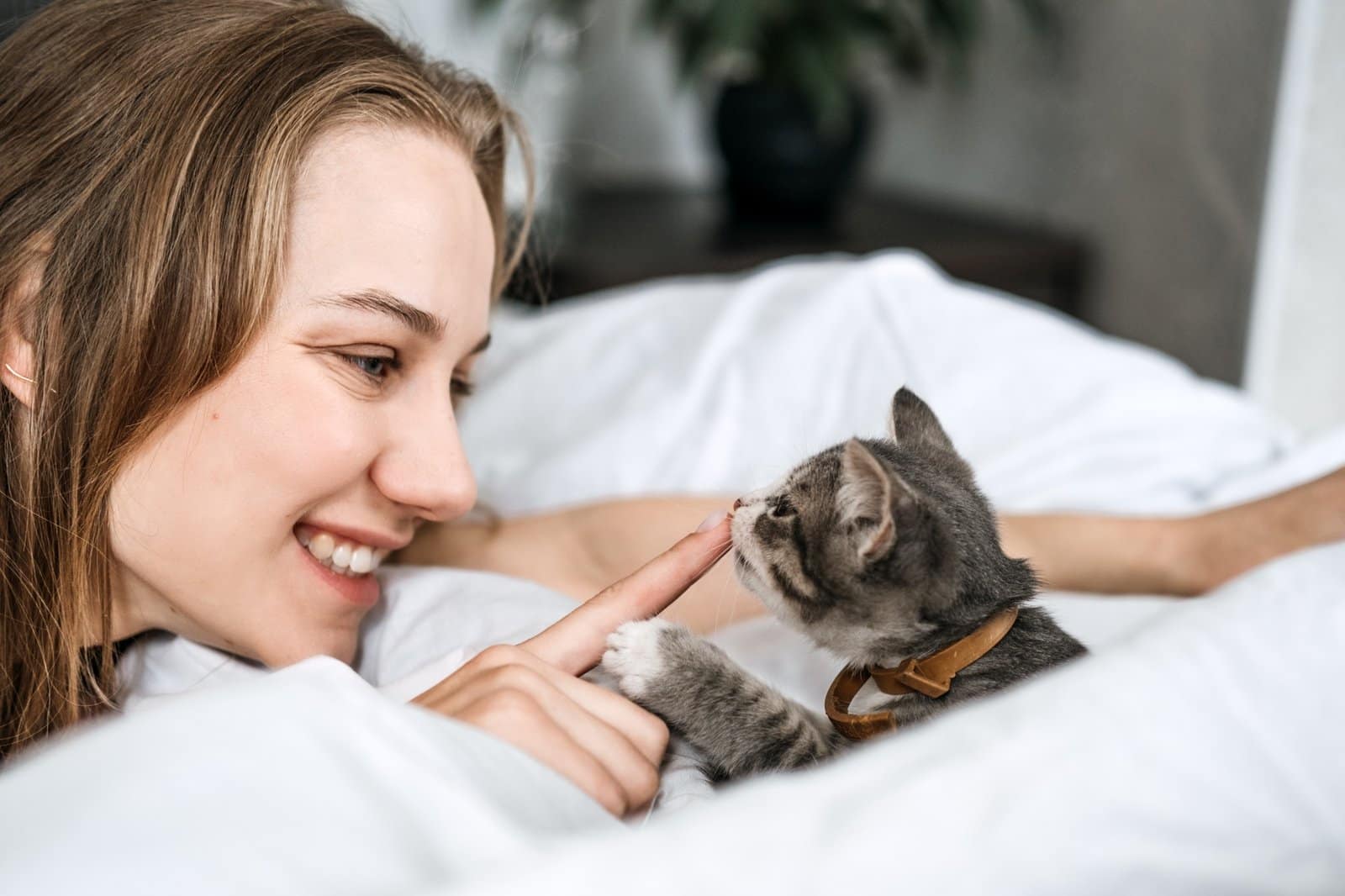Introduction
At SnuggleSouls, we understand the profound joy and unique bond that comes with welcoming a feline into your life. We’ve all experienced that special warmth a purring cat brings to your lap, the quiet companionship they offer, and the playful antics that brighten even the dullest day. It’s more than just a pet; it’s a cherished family member, a loyal confidant, and a source of endless comfort and amusement.
Research indicates that cat owners often report better psychological health compared to those without pets, expressing feelings of greater happiness, confidence, and reduced nervousness.
They also tend to experience improved sleep, enhanced focus, and a greater ability to confront life’s challenges. Cats have a remarkable capacity to alleviate stress, demonstrably lowering cortisol levels and blood pressure.
Their non-judgmental presence can be profoundly calming, sometimes even more so than human partners during stressful situations, leading to lower heart rates and fewer errors in demanding tasks.
For children, a strong bond with a feline companion is associated with a higher quality of life, decreased feelings of sadness and loneliness, and improved social skills.
Our mission at SnuggleSouls is to simplify your journey, offering expert guidance and unwavering support to help you find your purr-fect match. We believe every cat deserves a loving home, and every home deserves the right cat.
We’re not just about rehoming; we’re about fostering lasting, harmonious relationships. Think of us as your trusted companions in this exciting adventure, here to help you navigate every step with confidence and care.
✨ Want to explore the wonderful world of more cat breeds and find your ‘dream cat’? Click here to learn more: [Cat Breeds]”
Are You Ready for a Cat?

Before you open your home and heart to a new feline friend, let’s have an honest conversation about the commitment involved. Adopting a cat is a significant decision, often spanning 15 to 20 years, or even more. We’ve even heard stories of cats living to an amazing 38 years old! This means committing to their well-being through all of life’s changes – yours and theirs.
The Lifelong Commitment
One of the most impactful decisions you’ll make regarding your cat’s longevity and safety is the choice between an indoor or outdoor lifestyle. Indoor cats, on average, enjoy a significantly longer life expectancy, typically ranging from 13 to 17 years and often extending into their early 20s.
In stark contrast, outdoor cats, who spend most of their lives unsupervised, have a much shorter average lifespan of just 2 to 5 years.
This dramatic difference arises because outdoor cats face numerous hazards, including traffic accidents, conflicts with other animals, exposure to infectious diseases, the risk of getting lost or stolen, and the danger of ingesting harmful substances like poisonous plants.
An indoor lifestyle, free from these external threats, provides a warm, comfortable, and secure environment that is reassuring for both the cat and their human companions.
Financial Preparedness
Bringing a cat into your life involves a financial commitment that extends beyond the initial adoption fee. It’s important to be prepared for both upfront costs and ongoing expenses throughout your cat’s life.
Here’s a general breakdown of what you might expect:
| Expense Category | Initial Costs (Approximate Range) | Annual Ongoing Costs (Approximate Range) | Notes |
| Adoption/Purchase | $0 – $1,500 | N/A | Shelter adoption fees are typically $0-$150, often including spay/neuter, vaccinations, and microchipping. Purebred cats from breeders can range from $500-$1,500+ and may not include initial medical care. |
| Medical (First Year) | $310 – $760 | N/A | Spay/neuter ($200-$560), initial vaccinations ($70-$200), microchipping ($45-$100), pre-anesthetic lab work ($120-$300). |
| Medical (Ongoing) | N/A | $65 – $300+ | Annual wellness exams ($65-$200), preventative medications (flea, tick, heartworm: $140+), dental care ($300+ annually). Unexpected emergencies can cost thousands. |
| Food & Treats | N/A | $240 – $1,980 | Varies significantly by diet type (wet vs. dry), brand, and cat’s size/needs. |
| Litter & Supplies | $50 – $230 | $100 – $400 | Initial: 1 litter boxes ($25), litter ($20), scoop ($7). Ongoing: litter ($100-$485) and other supplies. |
| Essentials & Toys | $100 – $700+ | $0 – $80+ | Carrier ($20-$170), bed/blankets ($10-$310), scratching post ($10+), cat tree ($10+), initial toys ($10-$80), grooming tools ($5-$55). Replacement items as needed. |
| Pet Insurance | N/A | $15 – $25/month | Optional, but highly recommended to help cover unexpected vet bills. Getting it early can be beneficial as pre-existing conditions may not be covered later. |
| Pet Care (Travel) | N/A | $25 – $30/day | When you are out of town. |
| Total Annual Cost | Varies widely | $760 – $3,495 | For an adult cat, after initial setup. |
The time commitment for cat ownership extends beyond mere minutes on a clock; it demands significant flexibility, learning, and planning. This is not simply about ticking off daily chores, but about adapting to a living being’s evolving needs, which can be unpredictable.
Time & Lifestyle Compatibility
Beyond the financial aspects, consider the time you can dedicate. Daily care involves 20 minutes to an hour for play, interaction, feeding, litter scooping, and health monitoring.
Weekly or bi-weekly tasks include vacuuming, brushing, nail trimming, and deep cleaning the litter box, along with purchasing supplies.
Annually, you’ll have vet check-ups and potentially flea treatments. Long-term, you’ll need to arrange care when you travel, commit to ongoing training, and be prepared to handle unexpected situations.
Household Environment
Creating a safe and stimulating environment is crucial for your cat’s well-being. This begins with thorough cat-proofing. Ensure small items like rubber bands, string, and children’s toys are picked up, as they can be ingested.
Cover electrical cords to prevent chewing, and unplug them when not in use. Lock away all potentially dangerous substances, including medications, cleaning products, and toxic plants.
Doors and windows should be secure, with firmly attached screens to prevent escapes or falls. For homes with small kittens, always keep toilet lids closed to prevent accidental falls.
If you have breakable or harmful objects on high surfaces, consider relocating them to protected, enclosed spaces.
Beyond safety, providing for your cat’s basic needs and enriching their environment is vital. Set up multiple food and water stations, especially if you have more than one cat, to reduce competition-related stress.
For litter boxes, the general rule is one box per cat, plus an additional one, placed in different, accessible locations throughout your home. Most cats prefer fine-grained, clumping litter in a large, uncovered box, cleaned at least once daily.
Cats are inherently arboreal creatures, meaning they naturally seek elevated positions for safety, observation, and comfort.
Providing vertical spaces like cat trees, wall-mounted shelves, or window perches is not just a luxury; it’s fundamental to a cat’s psychological well-being and helps prevent behavioral issues like furniture climbing or aggression.
These spaces offer escape routes from other pets or children and allow cats to survey their territory, reducing stress and promoting a sense of security. Similarly, offer various inviting resting areas to encourage them away from off-limits surfaces.
To protect your furniture from scratching, provide multiple sturdy scratching posts or pads made of various materials like sisal or cardboard. Use catnip or toys to attract them to these designated scratching areas.
Finally, ensure you have a portable kennel or crate for safe travel and vet visits, and a variety of interactive and self-play toys to keep them mentally and physically stimulated.
Finding Your Purr-fect Match: A Thoughtful Selection
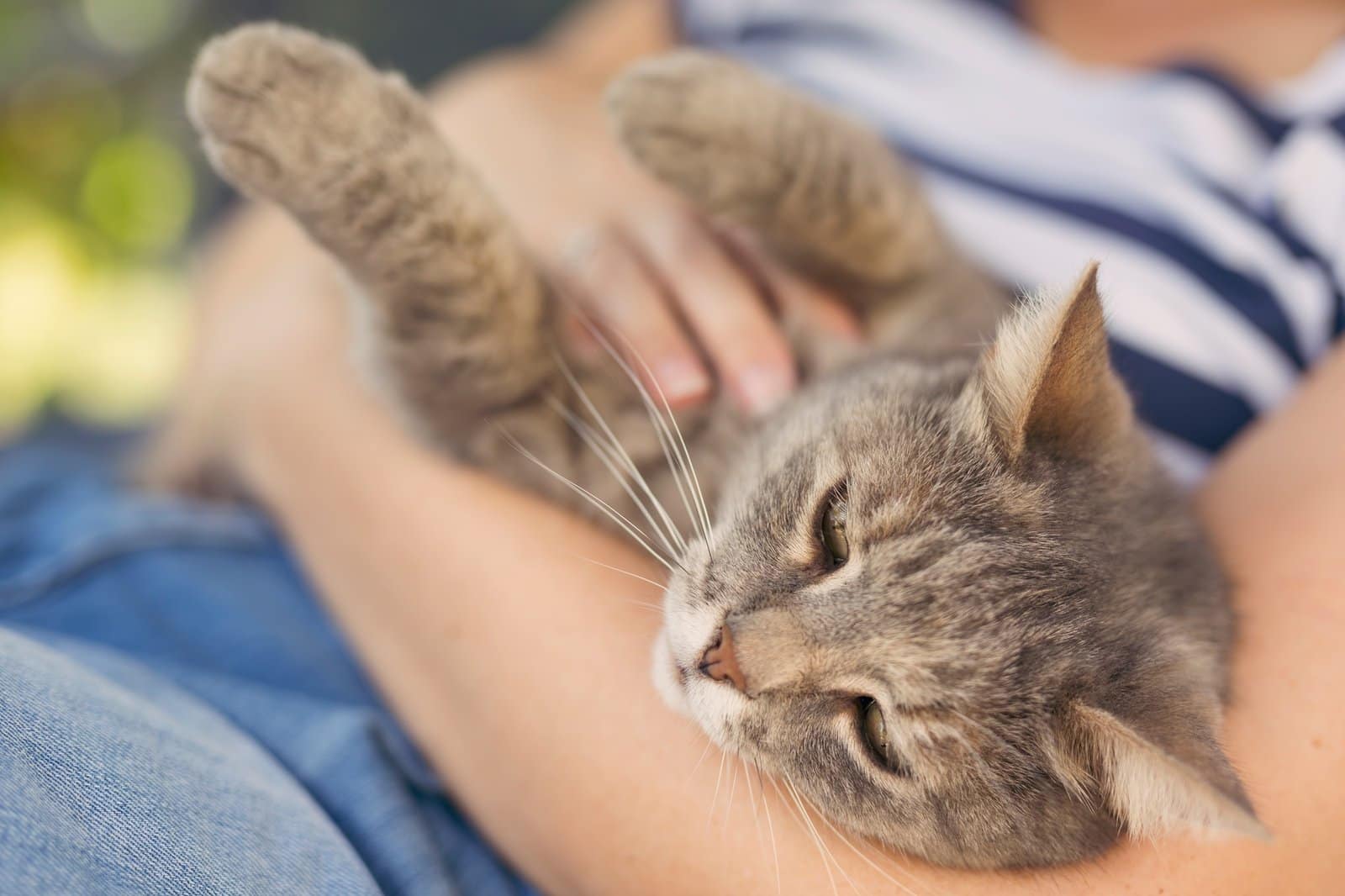
Finding the right cat is a journey of discovery, and understanding your options is the first step.
Where to Adopt: Shelters vs. Rescues
When you decide to adopt, you’ll typically choose between an animal shelter or a rescue organization. While both are dedicated to finding homes for animals in need, they often operate differently.
Animal Shelters:
Organizational Structure: Often run by local government agencies or larger non-profit organizations, shelters tend to be larger and have more resources.
Funding: They receive funding from various sources, including government agencies, private donations, and adoption fees.
Intake & Services: Shelters typically take in all strays from the community, regardless of breed, behavior, age, or health. They provide temporary housing, food, and medical care for a wide variety of animals, often with on-site veterinary staff.
Adoption Process: Generally more straightforward, involving an application, adoption fee, and sometimes a brief interview.
Rescue Organizations:
Organizational Structure: Typically smaller, private non-profit organizations that often focus on specific breeds, ages, or types of animals, including those with special needs.
Funding: They rely exclusively on private donations, fundraisers, and adoption fees.
Intake & Services: Rescues often “hand-pick” animals, focusing on specific populations. They usually operate through a network of volunteer foster homes, providing individualized attention in a home environment, which is particularly beneficial for animals with special needs or behavioral issues.
Adoption Process: May have more stringent requirements, such as in-depth interviews, home checks, and mandatory training classes, aimed at ensuring the best possible match, especially for animals who have experienced trauma or neglect.
Adopting from a foster-based rescue offers a significant advantage: you gain a clearer understanding of a cat’s true personality and habits.
Unlike the often-stressful shelter environment, a foster home allows the cat to relax and display its natural behaviors, including interactions with people, children, and other pets. Foster parents can provide invaluable insights into the cat’s daily routine, preferences, and any specific needs, leading to a more informed and successful match for your family.
Kitten vs. Adult vs. Senior vs. Special Needs: What’s Right for You?
The age and specific needs of a cat can greatly influence how they fit into your life.
Kittens (Under 1 year):
Pros: Fun and playful, highly trainable, easier to bond with as you raise them, often great for families with children.
Cons: Time-consuming due to high energy and training needs, their adult personality is unpredictable until they reach about one year old, and they require a full series of vaccinations.
Adult Cats (1-7 years):
Pros: Generally calmer and less mischievous, their personality is well-established so you know what to expect, and they are often more likely to cuddle on the sofa.
Cons: May have established “bad habits” that are harder to break, and can be more challenging to train if they are set in their ways.
Senior Cats (7+ years):
Pros: Ideal for quieter households, less likely to wander far from home or disturb you at night, often have lower or waived adoption fees. They are often overlooked in shelters, making adopting one a truly life-saving act.
Cons: More prone to health problems as they age, such as arthritis, dental disease, hyperthyroidism, diabetes, and kidney issues.
Special Needs Cats:
Pros: Offer immense love and resilience. Adopting them directly addresses the critical issue of euthanasia rates in shelters, as they are often the first to be euthanized.
Cons: Require significant time, patience, and financial resources. You must be prepared to understand and meet their specific medical or behavioral needs, which may involve ongoing veterinary costs and a deep emotional commitment. This might include providing accessible litter boxes, tailored feeding routines, and behavioral support.
While kittens and young adults are often the first to be adopted, senior and special needs cats are often overlooked, despite offering profound companionship and unique benefits.
Choosing one of these cats is not just an act of compassion; it’s often a deeply rewarding experience that provides a loving home to a truly deserving animal.
Personality Matching
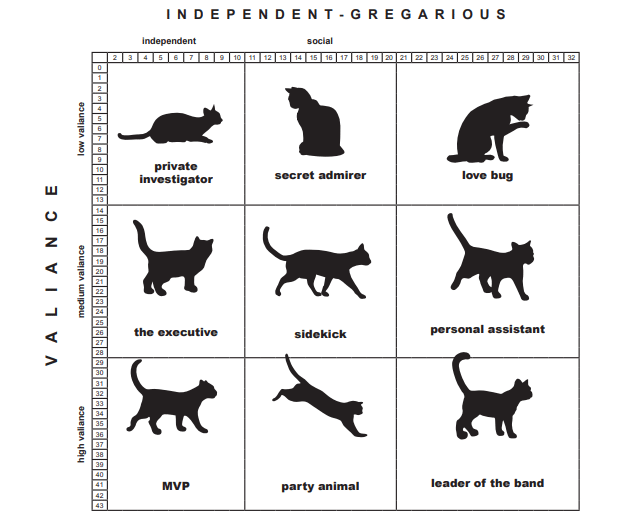
A cat’s personality is just as important as their appearance. Many shelters and rescues use assessment tools, like the ASPCA’s Feline-ality™ Assessment, to help match cats with suitable homes. These assessments evaluate a cat’s comfort level with people through interactions involving touch, reactions to movement and sounds, and behavior around toys and food.
Common personality types identified include:
| Private Investigator | Observant, may hide if disturbed, keeps to themselves. |
| Secret Admirer | Takes time to warm up but eventually showers affection. |
| Love Bug | Actively seeks affection, enjoys petting and lap time. |
| The Executive | Busy, independent, fits socializing into their schedule. |
| Sidekick | Good company, balances attention with solitude. |
| Personal Assistant | “Helpful” with chores, enjoys an orderly household. |
| MVP (Most Valuable Pussycat) | Savvy, unflappable, can entertain themselves but appreciates human companionship. |
| Party Animal | Loves to play and explore, can make a toy out of anything. |
| Leader of the Band | Adventurous, confident, likes to be the center of attention. |
Information from caregivers, veterinary reports, volunteers, and foster parents also provides valuable insight into a cat’s socialization level and true nature. When meeting a potential cat, ask specific questions about their energy level, social preferences, and how they interact with different people and environments.
The Adoption Process: Your Step-by-Step Guide
Application & Interview: What to Expect
Most organizations require you to complete an application. This helps them understand your living situation and what you’re looking for in a pet. Common questions you might encounter include:
– Your history with declawing cats.
– Whether you’ve ever had to rehome or surrender a cat before, and why.
– If the cat will be indoor, outdoor, or indoor/outdoor.
– The number of people in your household, including adults and children with their ages.
– Any current pets you own and their types.
– What you are looking for in a cat and what drew you to a particular one.
– Your veterinarian’s information, if you have one.
These questions are not meant to be intrusive but rather to ensure that the cat is placed in a suitable home where their needs can be met responsibly.
Meet & Greet: Making a Great First Impression
Once your application is reviewed, you’ll typically have a meet and greet with the cat. It’s crucial to allow the cat to initiate interaction.
Instead of immediately reaching out to pet them, try to coax them towards you using an interactive toy or by sitting quietly near their food bowl while they eat.
Avoid sudden movements or directly extending your hand, as this can startle them. Observe their body language carefully – a soft head butt or nudge indicates interest in interacting.
When they do approach, use gentle communication and offer soft chin pets. Positive reinforcement, such as treats and praise, can help build trust and create a positive association with your presence.
Timeline: How Long Does It Really Take?
The adoption timeline can vary significantly. For stray animals, there’s often a legal holding period of 7 days to allow owners to reclaim their pet.
During this time, applications are processed, including landlord and veterinarian checks. After the holding period, the animal might need to be spayed or neutered, which can add more days depending on clinic schedules.
This entire process could take 10 days or more. If an animal is surrendered and already spayed/neutered, the process can be much quicker, sometimes as soon as the next day, provided all necessary checks are completed.
Some shelters also accept multiple applications for a single animal and select the “best qualified applicant” who most closely meets that particular animal’s needs, which helps lower return rates.
Finalizing Adoption
Once you’ve found your match, you’ll finalize the adoption with paperwork, including an adoption contract. You should receive the cat’s medical records and often some initial food or toys. Adoption fees typically cover essential services like spaying or neutering, age-appropriate vaccinations, and microchipping.
Welcoming Your New Cat Home
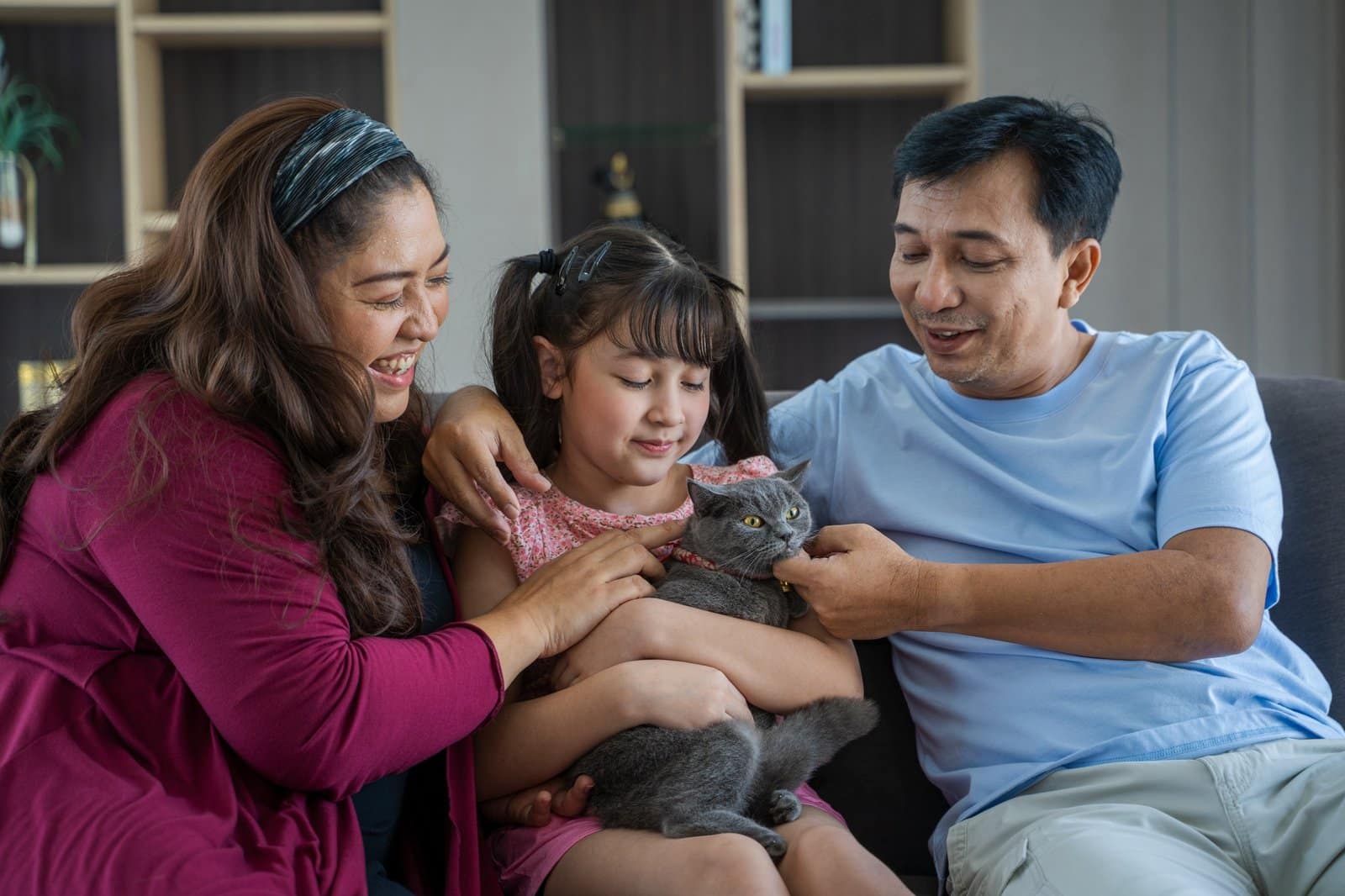
The first few days and weeks are a critical adjustment period for your new cat. They are adapting to a completely new environment, schedule, and set of expectations, which can be stressful. Adult cats often need more time to adjust than kittens, as they may have experienced rehoming before.
Creating a Safe Haven: The “Sanctuary Room”
We highly recommend setting up a dedicated “sanctuary room” for your new cat’s arrival. This should be a small, quiet, low-traffic room with limited hiding spots, but enough space to comfortably accommodate a litter box, fresh food, and water.
Remember that cats prefer not to eat near their litter box, so ensure these items are separated. Leave the cat’s carrier open in this room, perhaps near a wall, to provide an additional sense of security and a familiar retreat.
Cats are creatures of habit, and establishing a consistent routine from day one is paramount for their adjustment and long-term well-being.
Predictable feeding times, play sessions, and quiet periods reduce anxiety and help your cat feel secure in their new environment. This stability builds trust and allows them to relax and truly become themselves, fostering a stronger bond with their human family.
First Interactions: Patience is Key
When you first bring your cat home, open the carrier door and allow them to exit at their own pace. For the first few days, simply sit quietly in the room, observing them without trying to grab or force interaction.
Frequent, gentle visits are beneficial; each time, bring a small present like treats or a toy to create positive associations with your presence. Ensure all family members make gentle visits so the cat becomes familiar with everyone.
Always avoid sudden movements or loud noises, and communicate in a soft, quiet voice. If they approach, offer gentle chin pets.
During this adjustment period, you might notice signs of stress such as hiding, destructive behaviors, urinating outside the litter box, or refusing to eat.
Providing calming pheromones (sprays or diffusers) in their safe space can help encourage a sense of security. It’s critically important to ensure they are eating, drinking, and using the litter box, even if they are hiding.
Introducing to Other Pets & Children
Successful integration of a new cat into a household with existing pets or children hinges on a gradual, multi-sensory approach.
Introducing to Other Cats:
Begin with initial separation in the sanctuary room. Allow existing cats to acclimate to the new cat’s scent by exchanging bedding. After a few days, rotate the cats between rooms daily for scent familiarization.
Once they seem relaxed, introduce them visually through a carrier, allowing them to sniff each other through the wire. Conduct several short, supervised meetings daily, gradually increasing the duration.
Use positive reinforcement for calm behavior and avoid punishment, which can create negative associations. Always prioritize your resident cat to minimize jealousy.
Introducing to Dogs:
Before bringing the new cat home, ensure your existing dog has a designated refuge area. Confine the dog to one or two rooms using baby gates, allowing the cat to investigate at their own pace.
Once the cat is comfortable, arrange controlled meetings with the dog on a leash. Reward calm behavior from the dog with praise and treats, and simultaneously offer special treats to the cat to create positive associations.
Never allow the dog to chase the cat or pick them up, even if their intentions seem friendly, as the cat will perceive this as a threat.
Introducing to Children:
For the first few days, keep the new cat in a quiet, low-traffic room; if children are under 10, this should not be their bedroom.
Provide a safe retreat for the cat, such as a cat tree or a space over a baby gate, and teach children to respect these hideouts. Educate children on basic cat body language so they can recognize when the cat is happy or needs space.
Involve children in cat care, such as feeding or playing with interactive toys, to foster positive interactions. Teach appropriate animal handling and ensure the cat’s nails are trimmed to minimize scratches.
Always supervise interactions and model respectful behavior yourself.
Conclusion
Embarking on the journey of cat adoption is a truly rewarding experience, one that promises years of companionship, joy, and unconditional love.
As we have explored, this journey is most successful when approached with thoughtful preparation and a deep understanding of the commitment involved.
From the initial self-assessment of your time, financial resources, and living space, to navigating the adoption process and meticulously preparing your home, every step contributes to a harmonious future for both you and your feline friend.
We have emphasized that cat welfare is not merely about square footage but about providing opportunities for natural behaviors through thoughtful environmental enrichment.
We have also highlighted the interconnectedness of time, financial investment, and behavioral well-being, illustrating how proactive care in one area can positively impact others, fostering a stable and loving environment.
The rigorous processes of reputable adoption organizations serve as a valuable matchmaking service, ensuring that each cat finds a home where their unique personality and needs are understood and met.
At SnuggleSouls, we are dedicated to empowering you with the knowledge and tools to overcome challenges and build an extraordinary bond with your cat.
By embracing the principles of responsible pet ownership—consistent veterinary care, ongoing enrichment, and positive reinforcement—you are not just adopting a cat; you are welcoming a cherished family member into a lifetime of health, happiness, and harmony.
This guide is designed to be your trusted companion on this beautiful journey, helping you solve real-world problems and ensuring that your decision to adopt is one of the most fulfilling choices you will ever make.
“Every cat is unique, but understanding the personalities, needs and characteristics of different breeds can help you find the soul mate that perfectly matches your lifestyle!
✨ Want to explore the wonderful world of more cat breeds and find your ‘dream cat’? Click here to learn more: [Cat Breeds]”
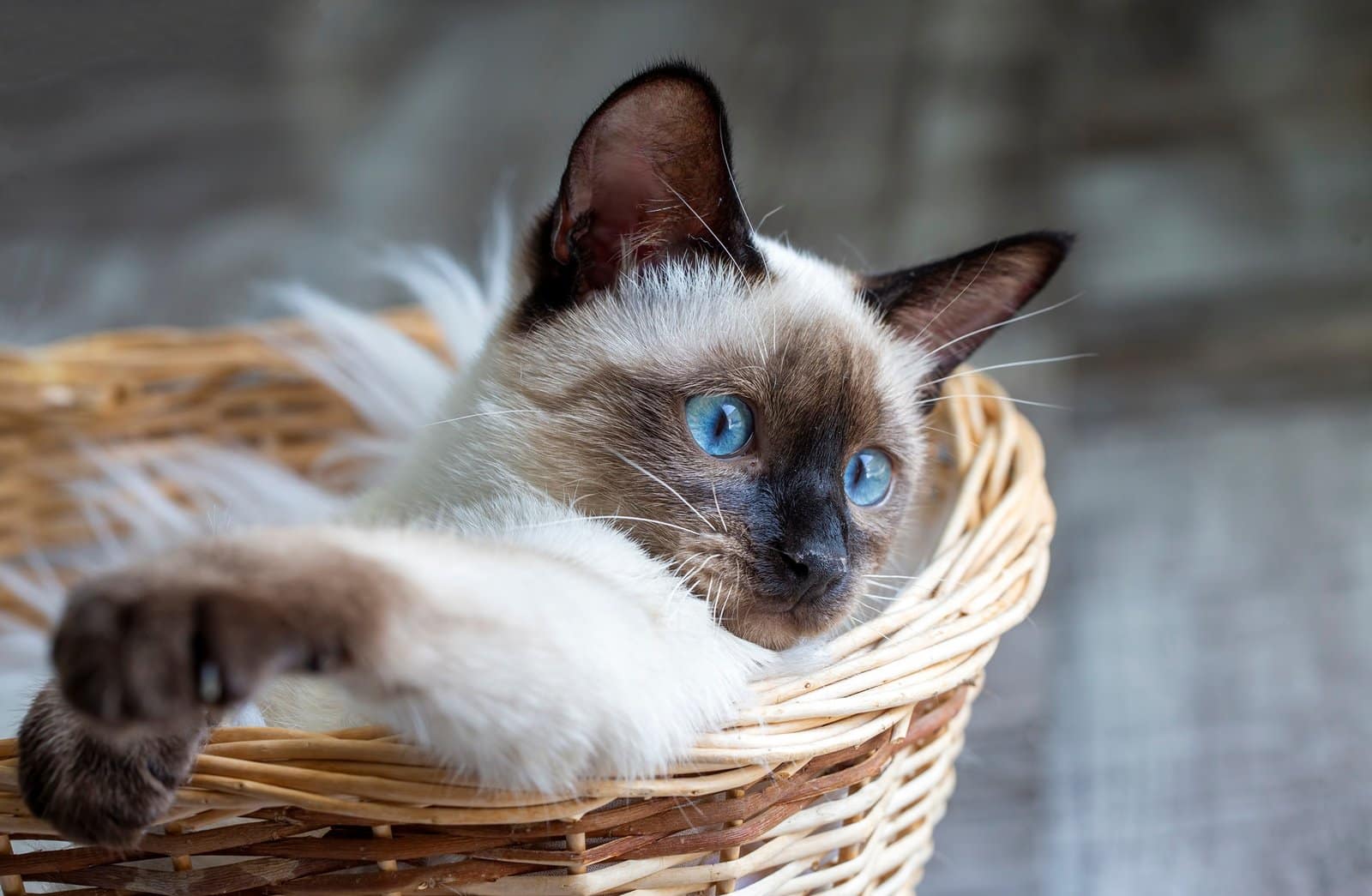
FAQ
What is the best age to adopt a cat?
The best age depends on your lifestyle and expectations. Kittens (under 6 months) are playful and adaptable but need more care and training. Adult cats (1–7 years) often have stable personalities and are easier for first-time owners. Seniors (8+ years) can be calm and affectionate, perfect for quieter homes.
Can I adopt a cat if I already have pets?
Yes, but introductions must be gradual. Use scent-swapping, visual barriers, and supervised interactions over several weeks to help cats adjust peacefully. Dogs and other pets also need slow, structured introductions.
How much does it cost to adopt and care for a cat?
Adoption fees vary ($50–$200 typically), but ongoing costs include food, litter, toys, preventive vet care, and occasional medical expenses—averaging $500–$1,000 per year.
What supplies should I prepare before bringing a cat home?
Essential items include: a litter box and litter, food and water bowls, scratching post, toys, cozy bedding, and a safe, quiet room for acclimation.
How do I know if my home is ready for a cat?
Ensure the space is cat-proofed—no toxic plants, accessible wires, or unstable furniture. You should also have time for feeding, play, and bonding, plus the ability to afford regular vet care.
How long does it take for a new cat to adjust?
Many cats need 3 days to settle, 3 weeks to learn routines, and 3 months to feel truly at home—the “3-3-3 rule.” Go at your cat’s pace and offer calm, predictable routines.
How do I choose the right cat for a multi-cat household?
Match energy levels and age. A younger cat may adapt better to a resident senior, but two adults with similar temperaments can also bond well. Ask shelters about the cat’s social history.
References
American Humane. (n.d.). Cat adoption checklist. Retrieved from https://www.americanhumane.org/public-education/cat-adoption-checklist/
Almost Home Humane. (n.d.). Introducing your new cat to your other pets. Retrieved from https://www.almosthomehumane.org/cat-handbook/introducing-your-new-cat-to-your-other-pets
Atlanta Humane Society. (2024, November 8). Essential supplies for new cat owners. Retrieved from https://atlantahumane.org/blog/cat-supplies/
Best Friends Animal Society. (n.d.). The best indoor cat enrichment ideas: Toys, puzzles, and more. Retrieved from https://bestfriends.org/pet-care-resources/best-indoor-cat-enrichment-ideas-toys-puzzles-and-more
Best Friends Animal Society. (2025). New cat checklist: Welcome your new feline friend home. Retrieved from https://bestfriends.org/pet-care-resources/new-cat-checklist-welcome-your-new-feline-friend-home
Beyond Pets. (2023, April 25). Common cat behavior problems. Retrieved from https://beyondpets.com/pet_health/common-cat-behavior-problems/
Cats at Play Cafe Asheville. (n.d.). Cat adoption checklist. Retrieved from https://www.catsatplaycafeasheville.com/blog-post/cat-adoption-checklist
Cornell University College of Veterinary Medicine. (n.d.). Disaster preparedness. Retrieved from https://www.vet.cornell.edu/departments-centers-and-institutes/cornell-feline-health-center/health-information/feline-health-topics/disaster-preparedness
Cornell University College of Veterinary Medicine. (2024). How often should you feed your cat?. Retrieved from https://www.vet.cornell.edu/departments/cornell-feline-health-center/health-information/feline-health-topics/how-often-should-you-feed-your-cat
FieldHaven. (2021, June). Emergency preparedness checklist for cats. Retrieved from https://fieldhaven.com/wp-content/uploads/2021/06/fieldhaven-animal-sheltering-team-evacuating-with-cats.pdf
Hartz. (n.d.). Bring this new cat checklist when you go to adopt. Retrieved from https://www.hartz.com/bring-this-new-cat-checklist-when-you-go-to-adopt/
Humane Society of Huron Valley. (n.d.). Training cats with positive reinforcement. Retrieved from https://www.hshv.org/training-cats-with-positive-reinforcement/
Insurify. (2025, June 16). How much do cats cost?. Retrieved from https://insurify.com/pet-insurance/knowledge/how-much-do-cats-cost/
Kinship. (n.d.). A step-by-step guide to adopting a cat. Retrieved from https://www.kinship.com/cat-lifestyle/step-by-step-guide-to-adopting-a-cat
Merck Veterinary Manual. (2024, September). Routine health care of cats. Retrieved from https://www.merckvetmanual.com/cat-owners/routine-care-and-breeding-of-cats/routine-health-care-of-cats
Nutrisource Pet Foods. (n.d.). Outdoors vs. indoors: What’s best for your cat?. Retrieved from https://nutrisourcepetfoods.com/blog/pet-parents/outdoors-vs-indoors-whats-best-for-your-cat/
PetFriendly Box. (n.d.). 21 cat enrichment ideas and activities for anxious cats. Retrieved from https://petfriendlybox.com/resource-center/cat-enrichment
Pittwater Animal Hospital. (n.d.). The first night at home. Retrieved from https://pittwateranimalhospital.com.au/cats/adoption/settling/
Purina. (n.d.). How much space do cats need. Retrieved from https://www.purina.co.uk/find-a-pet/articles/getting-a-cat/adoption/how-much-space-do-cats-need
Quora. (n.d.). How much money and time do pet owners spend on their cats. Retrieved from https://www.quora.com/How-much-money-and-time-do-pet-owners-spend-on-their-cats
Reddit. (2023, January 2). What’s the difference between buying a cat and adopting from a shelter vs rescue vs online platform. Retrieved from https://www.reddit.com/r/CatAdvice/comments/102fbxc/whats_the_difference_between_buying_a_cat_and/
Reddit. (2023, June 5). How much time do you actively spend with your cats. Retrieved from https://www.reddit.com/r/CatAdvice/comments/143n0fg/how_much_time_do_you_actively_spend_with_your_cats/
Safe Haven for Cats. (n.d.). The ultimate cat supply checklist. Retrieved from https://www.safehavenforcats.org/news/the-ultimate-cat-supply-checklist/
South Australia Government. (n.d.). Positive reinforcement training for your cat. Retrieved from https://www.sa.gov/files/assets/main/v/1/acs/documents/positive-reinforcement-cat.pdf
The Humane Society of Huron Valley. (n.d.). Cost of owning a cat. Retrieved from https://www.hshv.org/cost-of-owning-a-cat/
VCA Hospitals. (n.d.). Feeding times and frequency for cats. Retrieved from https://vcahospitals.com/know-your-pet/feeding-times-and-frequency-for-cats
Verve Cat. (n.d.). Time commitment: Cat ownership. Retrieved from https://vervecat.com/getting-started/commit/time-commitment-cat-ownership/
Veterinary Associates of Murfreesboro. (n.d.). Cat welcome kit. Retrieved from https://veterinaryassociatesofmurfreesboro.com/uploads/SiteAssets/834/files/forms/Cat-Welcome-Kit-VA-of-Murfreesboro.pdf
Zoetis Petcare. (n.d.). Cat-proof home. Retrieved from https://www.zoetispetcare.com/blog/article/cat-proof-home

